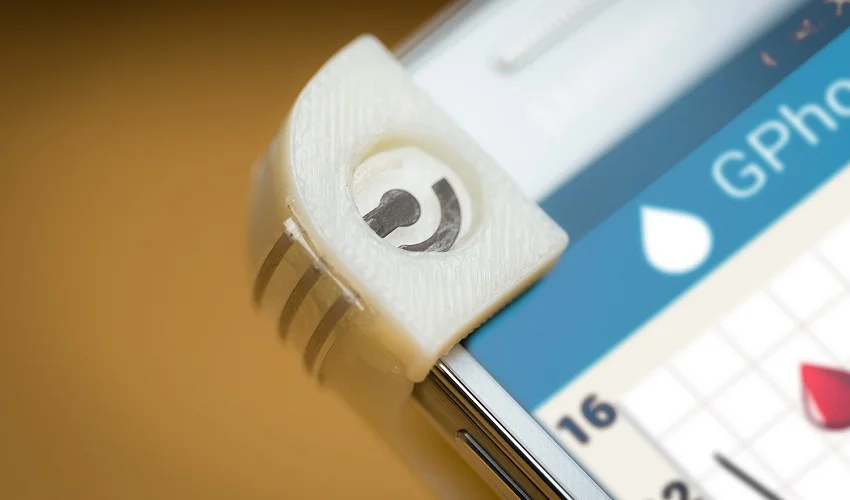What is diabetes monitoring?
Diabetes monitoring refers to the process of regularly checking and tracking blood sugar levels in individuals with diabetes. It involves the use of various tools and devices to measure glucose levels, such as blood glucose meters, continuous glucose monitors (CGMs), and insulin pumps. Monitoring diabetes is crucial for maintaining optimal control of blood sugar levels and preventing complications. By keeping a close eye on glucose levels, individuals with diabetes can make informed decisions about their diet, exercise, and medication to effectively manage their condition and reduce the risk of long-term complications.
Importance of diabetes monitoring
The importance of diabetes monitoring cannot be overstated. For individuals with diabetes, monitoring their blood sugar levels regularly is crucial for maintaining control over their condition. By regularly checking their blood sugar levels, individuals can assess how well their diabetes management plan is working and make necessary adjustments. Monitoring also helps individuals identify patterns and trends in their blood sugar levels, allowing them to take proactive measures to prevent complications. Additionally, monitoring provides valuable information for healthcare professionals, enabling them to provide personalized and effective treatment recommendations. Overall, diabetes monitoring plays a vital role in helping individuals with diabetes achieve optimal control and lead healthier lives.
Types of diabetes monitoring devices
There are several types of diabetes monitoring devices available that can help individuals effectively manage their condition. One type is blood glucose meters, which measure the level of glucose in the blood. These devices are portable and easy to use, allowing individuals to monitor their blood sugar levels regularly. Another type is continuous glucose monitoring systems, which provide real-time glucose readings throughout the day. These systems use a small sensor inserted under the skin to measure glucose levels and transmit the data to a receiver or smartphone. Insulin pumps are also a type of diabetes monitoring device that deliver insulin continuously throughout the day. They can help individuals maintain stable blood sugar levels by automatically adjusting the insulin dosage based on the individual’s needs. Overall, the availability of different types of diabetes monitoring devices allows individuals to choose the tool that best suits their needs and lifestyle for effective diabetes management.
Blood Glucose Meters
How blood glucose meters work
Blood glucose meters are essential tools for individuals with diabetes to monitor their blood sugar levels. These devices work by measuring the amount of glucose in a small sample of blood. The process involves inserting a test strip into the meter, pricking the finger to obtain a drop of blood, and applying the blood to the test strip. The meter then calculates the glucose level and displays the result on a screen. This information is crucial for people with diabetes to make informed decisions about their diet, medication, and overall health management. With advancements in technology, blood glucose meters have become more accurate, user-friendly, and connected to smartphone apps, allowing for better tracking and analysis of blood sugar trends. Overall, blood glucose meters play a vital role in helping individuals with diabetes maintain optimal control of their condition.
Pros and cons of blood glucose meters
Blood glucose meters are essential tools for individuals with diabetes to monitor their blood sugar levels. They provide quick and accurate results, allowing users to make informed decisions about their diet, medication, and lifestyle choices. One of the main advantages of blood glucose meters is their portability, enabling users to test their blood sugar levels anytime, anywhere. Additionally, these devices are user-friendly and require minimal training to operate. However, there are some drawbacks to consider. Blood glucose meters can be expensive, especially when considering the cost of test strips and lancets. Furthermore, the accuracy of these devices can vary, and there may be discrepancies between readings from different meters. Despite these limitations, blood glucose meters remain a vital tool for diabetes management, providing individuals with valuable information to maintain optimal control over their condition.
Choosing the right blood glucose meter
Choosing the right blood glucose meter is crucial for individuals with diabetes who need to monitor their blood sugar levels regularly. With so many options available in the market, it can be overwhelming to find the best device for control. When selecting a blood glucose meter, it is important to consider factors such as accuracy, ease of use, size, cost, and additional features. Accuracy is paramount as it ensures that the readings obtained are reliable and can be used to make informed decisions about insulin dosages and dietary adjustments. Ease of use is another important factor to consider, especially for those who may have limited dexterity or visual impairments. The size of the meter is also significant as it should be portable and convenient to carry around. Cost is a practical consideration, as some meters may be more affordable than others, and additional features like data storage and connectivity to smartphone apps can enhance the monitoring experience. By carefully considering these factors, individuals with diabetes can choose the right blood glucose meter that suits their specific needs and helps them effectively manage their condition.
Continuous Glucose Monitoring Systems
How continuous glucose monitoring systems work
Continuous glucose monitoring systems work by continuously measuring glucose levels in the body. These devices use a small sensor that is inserted under the skin to monitor glucose levels in the interstitial fluid. The sensor sends the glucose readings to a transmitter, which then transmits the data to a receiver or smartphone app. The receiver or app displays the glucose levels in real-time, allowing users to track their glucose levels throughout the day. This technology provides valuable insights into glucose patterns and trends, helping individuals with diabetes make informed decisions about their diet, medication, and lifestyle choices for better control of their condition.
Advantages of continuous glucose monitoring systems
Continuous glucose monitoring systems have revolutionized the way individuals with diabetes monitor their blood sugar levels. These devices offer several advantages over traditional glucose monitoring methods. One major advantage is the ability to continuously track glucose levels throughout the day and night, providing real-time data and alerts for any fluctuations or trends. This allows for better management of blood sugar levels and can help individuals make more informed decisions about their diet, exercise, and medication. Additionally, continuous glucose monitoring systems reduce the need for frequent finger pricks, providing a more convenient and comfortable monitoring experience. Overall, these devices have proven to be highly effective in improving diabetes management and enhancing the quality of life for individuals with diabetes.
Limitations of continuous glucose monitoring systems
Continuous glucose monitoring systems have revolutionized diabetes management by providing real-time glucose readings and alerts. However, these devices do have some limitations. One of the main drawbacks is the need for frequent calibration and sensor replacement, which can be time-consuming and costly. Additionally, some users may experience skin irritation or discomfort from wearing the sensor continuously. Another limitation is the occasional inaccuracies in glucose readings, especially during rapid glucose fluctuations or when the sensor is not properly placed. Despite these limitations, continuous glucose monitoring systems remain valuable tools for individuals with diabetes in monitoring and managing their blood sugar levels.
Insulin Pumps
Functionality of insulin pumps
Insulin pumps are a vital tool for individuals with diabetes, offering a convenient and efficient way to manage their insulin levels. These devices function by delivering a continuous supply of insulin into the body through a small tube, eliminating the need for multiple daily injections. The functionality of insulin pumps extends beyond just insulin delivery. They also allow users to adjust their insulin doses according to their specific needs, providing flexibility in managing blood glucose levels. Additionally, insulin pumps have advanced features such as continuous glucose monitoring, which enables real-time tracking of blood sugar levels. This functionality helps users make informed decisions about their insulin dosing and overall diabetes management. Overall, insulin pumps play a crucial role in improving the quality of life for individuals with diabetes by providing precise insulin delivery and empowering them to take control of their health.
Benefits of using insulin pumps
Insulin pumps offer several benefits for individuals with diabetes. One of the main advantages is the ability to deliver insulin continuously throughout the day, mimicking the body’s natural insulin production. This helps to maintain more stable blood sugar levels and reduces the risk of sudden spikes or drops. Additionally, insulin pumps allow for more precise dosing, as they can deliver insulin in small increments. This level of accuracy can be particularly beneficial for individuals who have varying insulin needs throughout the day. Another advantage of using insulin pumps is the convenience they provide. Unlike multiple daily injections, which require carrying around syringes and vials of insulin, pumps are compact and discreet. They can be easily attached to clothing or hidden under clothing, allowing individuals to administer insulin without drawing attention. Overall, insulin pumps offer a convenient and effective way to manage diabetes and improve overall quality of life.
Considerations when using insulin pumps
When using insulin pumps for diabetes management, there are several important considerations to keep in mind. Firstly, it is crucial to regularly monitor blood glucose levels to ensure that the correct amount of insulin is being delivered. This can be done through the use of continuous glucose monitoring systems, which provide real-time data on blood sugar levels. Additionally, it is essential to properly maintain and clean the insulin pump to prevent any infections or malfunctions. Regularly changing the infusion sets and reservoirs is also necessary to ensure the effectiveness and safety of the pump. Lastly, it is important to work closely with a healthcare provider to determine the appropriate insulin dosage and to receive proper training on how to use the insulin pump effectively. By considering these factors, individuals can maximize the benefits of insulin pumps for diabetes control.
Smart Insulin Pens
Features of smart insulin pens
Smart insulin pens are innovative devices that have revolutionized diabetes management. These pens are equipped with advanced features that make insulin administration more precise and convenient. One of the key features of smart insulin pens is the ability to track insulin doses and provide real-time data to users. This allows individuals with diabetes to monitor their insulin intake accurately and make necessary adjustments to their treatment plan. Additionally, smart insulin pens often have built-in reminders and alerts to ensure that users never miss a dose. With their user-friendly interfaces and seamless connectivity to mobile apps, smart insulin pens are empowering individuals with diabetes to take control of their health and effectively manage their condition.
Advantages of using smart insulin pens
Smart insulin pens offer several advantages for diabetes management. Firstly, they provide accurate and precise insulin dosing, ensuring that patients receive the correct amount of insulin needed to control their blood sugar levels. This can help prevent both hypo- and hyperglycemia, reducing the risk of complications. Additionally, smart insulin pens often come with built-in memory and data tracking features, allowing patients and healthcare providers to easily monitor and analyze insulin usage patterns over time. This data can be used to make informed decisions about insulin adjustments and treatment plans. Furthermore, smart insulin pens are user-friendly and convenient to use, with intuitive interfaces and easy-to-read displays. They are compact and portable, making them ideal for on-the-go diabetes management. Overall, the advantages of using smart insulin pens make them an invaluable tool for individuals with diabetes in achieving optimal control and improving their quality of life.
Integration with smartphone apps
Integration with smartphone apps is one of the key features to consider when choosing diabetes monitoring devices. With the advancements in technology, many devices now offer seamless integration with smartphone apps, allowing users to easily track their blood sugar levels, medication intake, and activity levels all in one place. These apps provide real-time data and notifications, making it easier for individuals with diabetes to manage their condition. Additionally, the integration with smartphone apps enables users to share their data with healthcare professionals, facilitating better communication and personalized care. Overall, the integration with smartphone apps enhances the convenience and effectiveness of diabetes monitoring devices, empowering individuals to take control of their health.
Choosing the right diabetes monitoring device
Choosing the right diabetes monitoring device is crucial for effectively managing and controlling the condition. With a wide range of options available in the market, it is important to consider factors such as accuracy, ease of use, and compatibility with other devices. Some popular choices include blood glucose meters, continuous glucose monitoring systems, and insulin pumps. Each device has its own advantages and limitations, so it is essential to consult with a healthcare professional to determine the best option for individual needs. By selecting the right diabetes monitoring device, individuals can gain valuable insights into their blood sugar levels, make informed decisions about their diet and medication, and ultimately improve their overall quality of life.
Importance of regular monitoring
Regular monitoring of diabetes is crucial for effective management and control of the condition. It allows individuals to track their blood sugar levels, identify patterns, and make informed decisions about their treatment plan. By monitoring regularly, individuals can also detect any potential complications early on and take necessary steps to prevent further health issues. Additionally, regular monitoring empowers individuals to make lifestyle adjustments, such as dietary changes and exercise routines, to better manage their diabetes. Overall, the importance of regular monitoring cannot be overstated as it plays a significant role in maintaining optimal health and well-being for individuals with diabetes.
Future advancements in diabetes monitoring
Future advancements in diabetes monitoring are poised to revolutionize the way individuals with diabetes manage their condition. With the rapid progress in technology, there is a growing emphasis on developing innovative monitoring devices that are more accurate, convenient, and user-friendly. One promising advancement is the development of continuous glucose monitoring (CGM) systems that can provide real-time glucose readings throughout the day. These systems eliminate the need for frequent finger pricks and allow for better glycemic control. Additionally, the integration of CGM data with insulin pumps and smartphone apps enables personalized and proactive diabetes management. Another exciting development is the use of artificial intelligence algorithms to analyze glucose data and provide personalized recommendations for insulin dosing and lifestyle modifications. These advancements hold great potential for improving diabetes management and enhancing the quality of life for individuals with diabetes.




